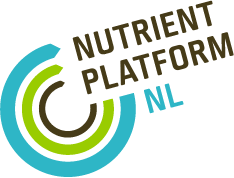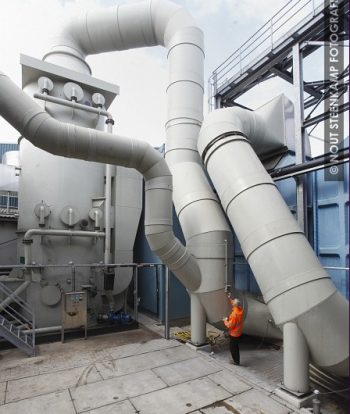Ammonium sulphate from process-air
GMB BioEnergie turns problems into opportunities. The air which is used to aerate compost in the biological tunnel drier of GMB BioEnergie contains a lot of ammonia. The emission of this ammonia-rich air has led to odour problems in the past. Now, GMB BioEnergie regards this air as a useful source of nutrients.The air is directed through a biological washer with sulphuric acid. The sulphuric acid binds the ammoniacal nitrogen, creating ammonium sulphate, which is a nitrogenous sulphur fertilizer that is officially recognised and traded. Ammonium sulphate contains 80 kg nitrogen and 90 kg sulphur per tonne. Furthermore, thanks to this process odour problems belong to the past. In Zutphen a storage facility has been realised for 4,000 m3 of ammonium sulphate to apply during the growing season. Per year, 12,000 tonnes of ammonium sulphate is produced in a 38% dissolution.
The merit of large scale recovery of nitrogen from wastewater sludge is that nitrogen compounds in wastewater treatment plants are usually the most critical compounds to remove, for which a lot of effort is needed to eventually release the nitrogen back again into the atmosphere. Also the industrial extraction of nitrogen via the Haber-Bosch process requires a lot of fossil fuels (natural gas). Worldwide, around 3,3% of all the natural gas production is used for nitrogen production, accounting for 0,75% of global energy consumption.The combination of nitrogen removal from process-air that is released with biological sludge drying, and the recovery of ammonium sulphate, is therefore unique.
STATUS
In operation.
MORE INFORMATION
http://www.gmb.eu/Nutriënten.aspx?NL-1-119-0
GMB BioEnergie BV
Martin Wilschut
Oostzeestraat 3b
7202 CM Zutphen
Nederland
Postbus 181
7200 AD Zutphen
Nederland
T +31 575 514430 | E info@gmb.eu
www.GMB.eu
Twitter: @GMBtweet


